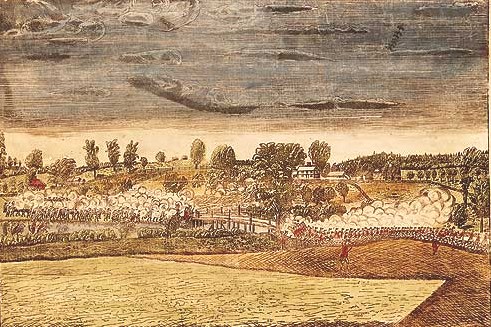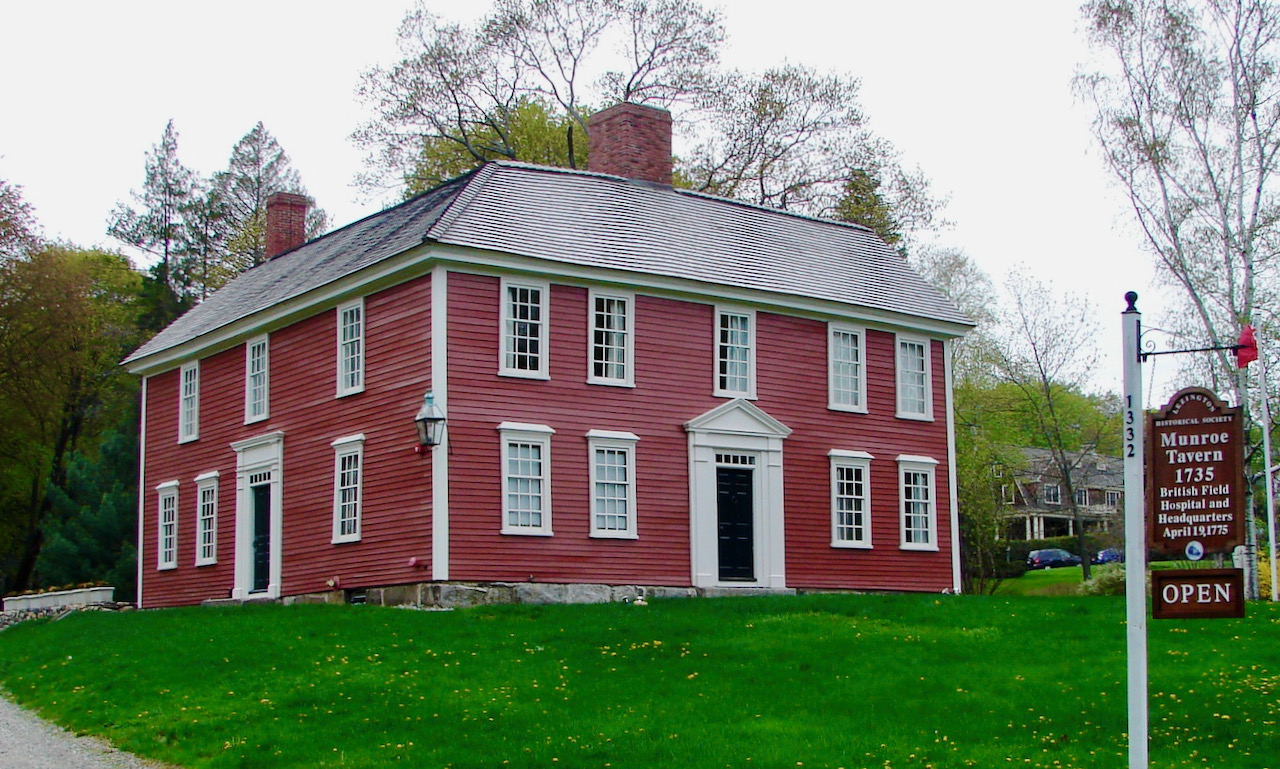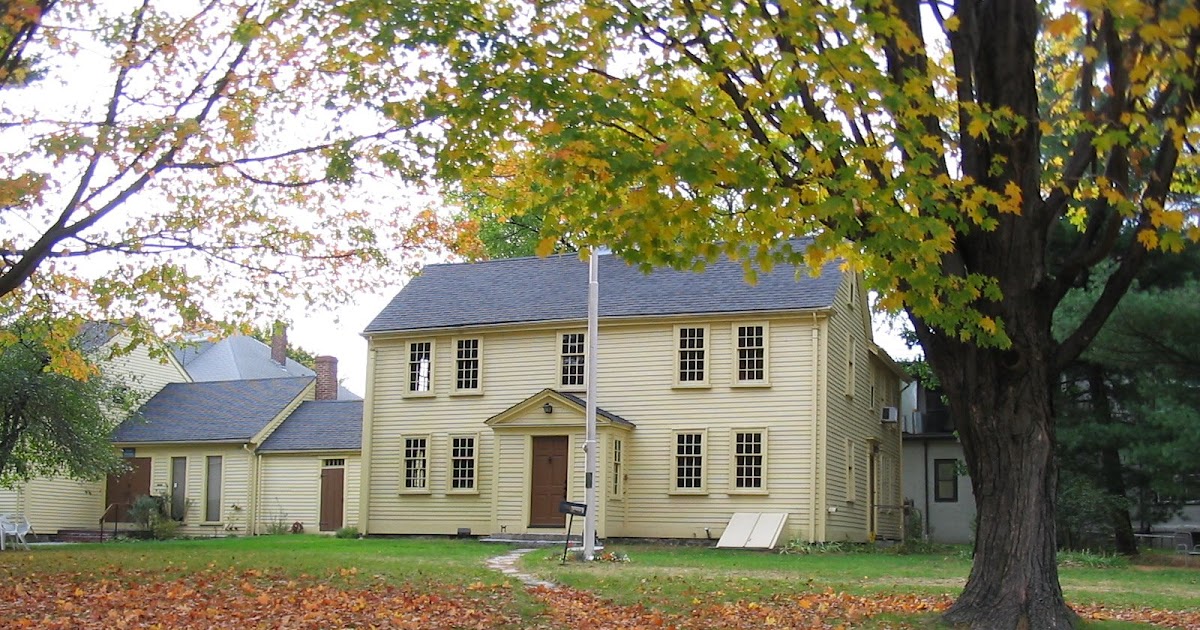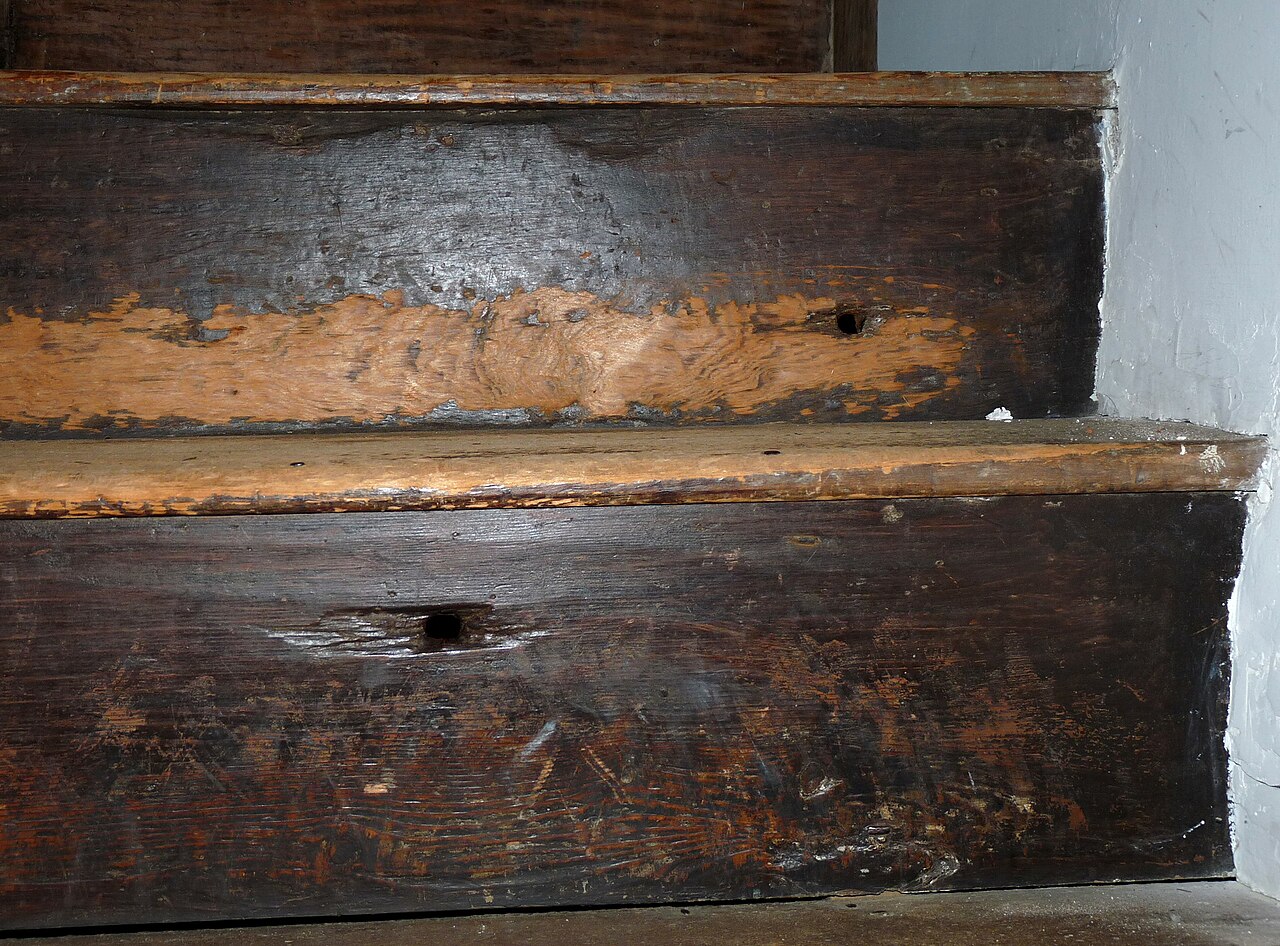- About Us
- Search
- Need Help?
- Donate
- Login/Register
Latest Entries
Actions Menu
Blog Roll
- 4F Facebook Page
- Turn Up The Night with Kenny Pick
- Stephanie Miller Show
- The Tim Corrimal Show
- The Rachel Maddow Show
- Angry Americans with Paul Rieckhoff
- Thom Hartmann Program
- Turnips! Fans of Turn Up the Night Facebook Page
- Snopes.com
- Factcheck.org
- Official White House Page, if you must.
- The Brad Blog / Green News Report
- The Poorly Written Political Blog (Joe Santorsa)
Ask a Vet
Author: TriSec
Date: 04/15/2024 23:58:36
Good Morning.
Later this week, we remember the events at Lexington and Concord on April 19, although the holiday to remember was yesterday. (Monday)
We often write about the men involved in those events at this time of year here at AAV. But this is New England, so I'd like to take a different view. It's the point of view of inanimate objects.
In New England, we have many buildings and things still standing that predate those momentous events. Several along the Battle Road were there on that fateful day, and now they are called "Witness Houses".
Following the footsteps of the British and Minutemen, we'll start at Lexington Green. This is Buckman Tavern.

It was built in 1709, and stands alongside the Green. It was where the Minutemen gathered before dawn to await the arrival of the British Column from Boston. 800 regular army troops marched into the neighborhood along Massachusetts Avenue.
After the events of that morning, the Minutemen dispersed, and the Army continued on to Concord. We are all familiar with the Shot Heard 'Round the World, which occurred about 1pm on April 19. But the bridge itself is a reproduction today. The latest version was built in 1909, but it is based on the woodcut that was produced by Amos Doolittle some ten days after the battle.

After the rout at the bridge, the British retreated. They were pursued by the Minutemen back the way they came down what is now called the Battle Road. Names you should know were the scene of repeated ambushes on the column by those Patriots. Bloody Angle. Fiske Hill. Parker's Revenge.
Passing by Lexington Green, the British paused for about 90 minutes at Munroe Tavern to rest and tend to their wounded. The circumstances are unclear, but the building bears a bullet hole in the ceiling, likely from a British musket.

Departing the tavern, the British continued back the way they came. By the time they reached Menotomoy (now Arlington, MA) the original 800 soldiers were outnumbered by more than 2,000 colonials that kept up a running battle. Only the superior discipline of trained British soldiers kept it from turning into a rout.
But in Menotomoy, ordinary citizens emboldened by the days' events began to organize and defend their own homes against the passing soldiers. The fiercest fighting of the day took place at a little-know location called the Jason Russell House. Even among locals in the area, this site remains an unknown relic of the battle.

What is amazing about the house is the bullet holes. Under the main entrance, there is a stairwell where the Minutemen and Jason Russell stood their ground. It did not end well for them.

Consider that many of the bullets that made those holes likely passed through the bodies of Patriots prior to leaving their mark on the building.
The British eventually reached the safety of Charlestown, and started building a fortification on the summit of Bunker Hill. A mere two months later, a new battle would rage on that site as the Minutemen strengthened the siege of Boston.
All of this is in my backyard. There is a large church across the street from the Jason Russell house that many Scout meetings take place. I am always awed by the place when I drive by it. I used to work at a place where I drove past Lexington Green twice a day. And Javier and I often snowshoe along the Battle Road. A place so familiar that I refer to it as "Going to Paul's". And I mean the Paul Revere Capture site.
It's something we often take for granted in Greater Boston. People from around the country and around the world come to see these places. But it is just home for me.
Most of us on the blog live and work in places touched by Revolutionary and Civil War. Do take a moment to consider the history - as well as the veterans that fought and places that witnessed it - in our own backyards.
(And as I always note - any of you journeying to my neck of the woods have an experienced guide and narrator at your service.)
Later this week, we remember the events at Lexington and Concord on April 19, although the holiday to remember was yesterday. (Monday)
We often write about the men involved in those events at this time of year here at AAV. But this is New England, so I'd like to take a different view. It's the point of view of inanimate objects.
In New England, we have many buildings and things still standing that predate those momentous events. Several along the Battle Road were there on that fateful day, and now they are called "Witness Houses".
Following the footsteps of the British and Minutemen, we'll start at Lexington Green. This is Buckman Tavern.

It was built in 1709, and stands alongside the Green. It was where the Minutemen gathered before dawn to await the arrival of the British Column from Boston. 800 regular army troops marched into the neighborhood along Massachusetts Avenue.
The Battle of Lexington and Concord took form before dawn on April 19, 1775. Having received word that the regular army had left Boston in force to seize and destroy military supplies in Concord, several dozen militiamen gathered on the town common, and then eventually went to the tavern to await the arrival of the British troops. Definite word reached them just before sunrise, and Captain Parker's company of militia left the tavern to assemble in two ranks on the common. Following the arrival of the army, a single shot was fired; by whom, it is still unknown. With this shot, the American Revolutionary War began.[5][6]
Although best known as the headquarters of the militia, Buckman Tavern is also noteworthy as perhaps the busiest of Lexington's 18th-century taverns. It housed the first village store in Lexington, and later, in 1813, the first town post office.
After the events of that morning, the Minutemen dispersed, and the Army continued on to Concord. We are all familiar with the Shot Heard 'Round the World, which occurred about 1pm on April 19. But the bridge itself is a reproduction today. The latest version was built in 1909, but it is based on the woodcut that was produced by Amos Doolittle some ten days after the battle.

After the rout at the bridge, the British retreated. They were pursued by the Minutemen back the way they came down what is now called the Battle Road. Names you should know were the scene of repeated ambushes on the column by those Patriots. Bloody Angle. Fiske Hill. Parker's Revenge.
Passing by Lexington Green, the British paused for about 90 minutes at Munroe Tavern to rest and tend to their wounded. The circumstances are unclear, but the building bears a bullet hole in the ceiling, likely from a British musket.

A large force of British troops arrived at Lexington before dawn the next morning, and shots were exchanged on the town common, beginning the Battles of Lexington and Concord. That afternoon the tavern served as the headquarters for Col. Hugh, Earl Percy, and his one thousand reinforcements. The British occupied the tavern for one and one-half hours, during which time the dining room was converted into a field hospital for the wounded, while exhausted British troops consumed liberal quantities of food and drink, compelling John Raymond, a lame private in Parker's company of minutemen who had fought against the soldiers earlier, to serve as their bartender. When Raymond attempted to escape through the door, the drunken soldiers shot and killed him.
President George Washington dined at the Munroe Tavern when he visited the Lexington battlefield in 1789. An upstairs room now contains the table and chair at which he sat and documents relating to his trip.
Departing the tavern, the British continued back the way they came. By the time they reached Menotomoy (now Arlington, MA) the original 800 soldiers were outnumbered by more than 2,000 colonials that kept up a running battle. Only the superior discipline of trained British soldiers kept it from turning into a rout.
But in Menotomoy, ordinary citizens emboldened by the days' events began to organize and defend their own homes against the passing soldiers. The fiercest fighting of the day took place at a little-know location called the Jason Russell House. Even among locals in the area, this site remains an unknown relic of the battle.

On April 19, 1775, the house and its surrounding yard was the site of the bloodiest conflict of the first battle in the Revolutionary War, resulting in more colonial troop deaths than anywhere else along the battle road. As British troops marched back towards Boston, heavy fighting occurred along their route through Arlington (then Menotomy). Brigadier-General Hugh Percy gave orders to clear every dwelling to eliminate snipers, and houses along the way were ransacked and set afire by the retreating British. The running battle continued to Jason Russell's house, where Russell was joined by men from Beverly, Danvers, Lynn, Salem, Dedham, and Needham at his house.
The battle at the Jason Russell House occurred late in the day, around five PM. Light infantry and grenadiers from the detachment which engaged earlier at Lexington and Concord marched toward Boston along the Concord Road. They had been met earlier in Lexington by a brigade led by Lord Percy that brought up the rear and provided strong flanking parties. The Americans kept up incessant fire from behind stone walls and other places of shelter as the British retreated.
These skirmishes erupted into a full-fledged battle at the Jason Russell House. A company of minute-men under the command of Gen. Gideon Foster, along with several other companies of minute-men and militia, had left Danvers earlier. All reached Menotomy before the British. Many of them went into a walled enclosure near the Jason Russell House where they planned to intercept the retreating soldiers.Despite being warned to watch for a flank-guard, by Israel Hutchinson, one of their company captains, they focused on the main body of British as it passed. When the party flanking the Concord Road to the south surprised them, the Americans fled to the Jason Russell House.
What is amazing about the house is the bullet holes. Under the main entrance, there is a stairwell where the Minutemen and Jason Russell stood their ground. It did not end well for them.
Russell was outside his house and joined his fellow minute-men as they fled toward it. Being old and slow, he was in the rear and was shot twice as he reached his own doorway and then stabbed eleven times with bayonets. The British then rushed into the house and engaged its occupants, prompting the minutemen to find shelter. Eight minute-men made it to the basement and fire up the stairs. When Jason's wife returned, she found her husband and all of the dead laid side by side in the kitchen. The house itself was riddled with bullet holes, many of them still visible. The blood stains on the floor were still visible when it was replaced in 1863.

Consider that many of the bullets that made those holes likely passed through the bodies of Patriots prior to leaving their mark on the building.
The British eventually reached the safety of Charlestown, and started building a fortification on the summit of Bunker Hill. A mere two months later, a new battle would rage on that site as the Minutemen strengthened the siege of Boston.
All of this is in my backyard. There is a large church across the street from the Jason Russell house that many Scout meetings take place. I am always awed by the place when I drive by it. I used to work at a place where I drove past Lexington Green twice a day. And Javier and I often snowshoe along the Battle Road. A place so familiar that I refer to it as "Going to Paul's". And I mean the Paul Revere Capture site.
It's something we often take for granted in Greater Boston. People from around the country and around the world come to see these places. But it is just home for me.
Most of us on the blog live and work in places touched by Revolutionary and Civil War. Do take a moment to consider the history - as well as the veterans that fought and places that witnessed it - in our own backyards.
(And as I always note - any of you journeying to my neck of the woods have an experienced guide and narrator at your service.)







